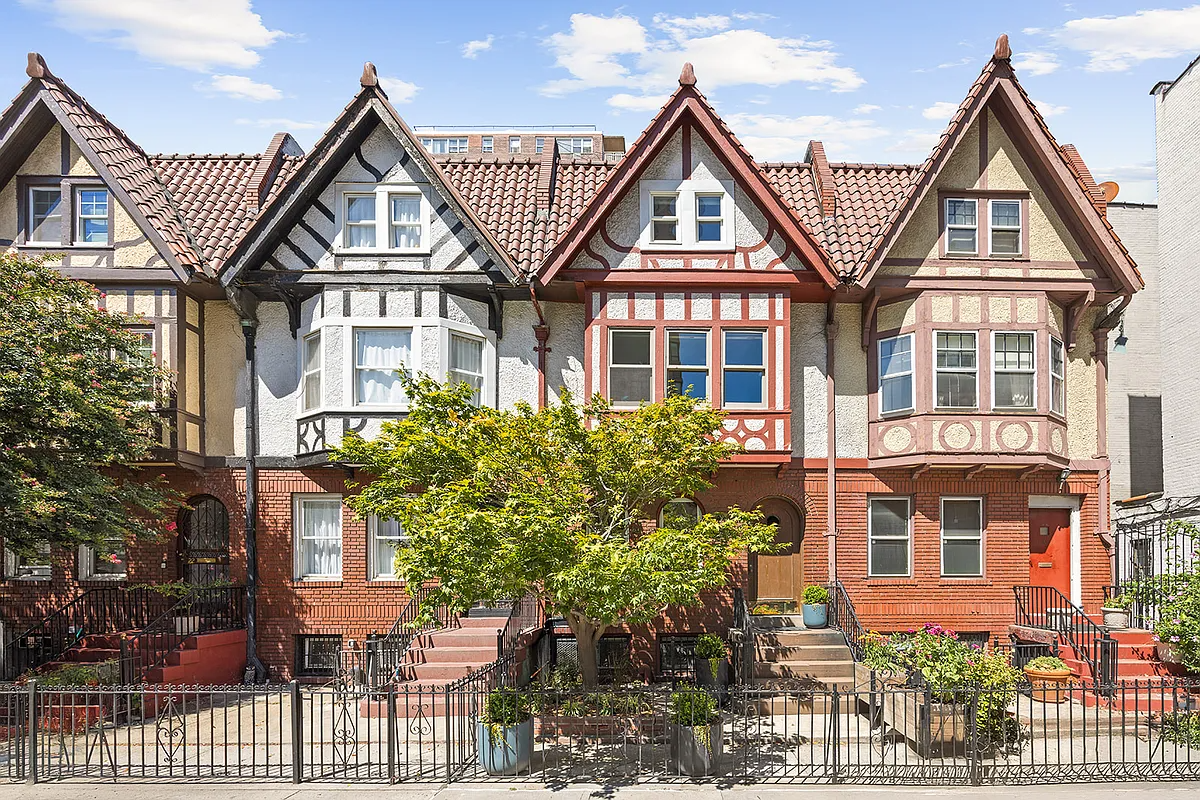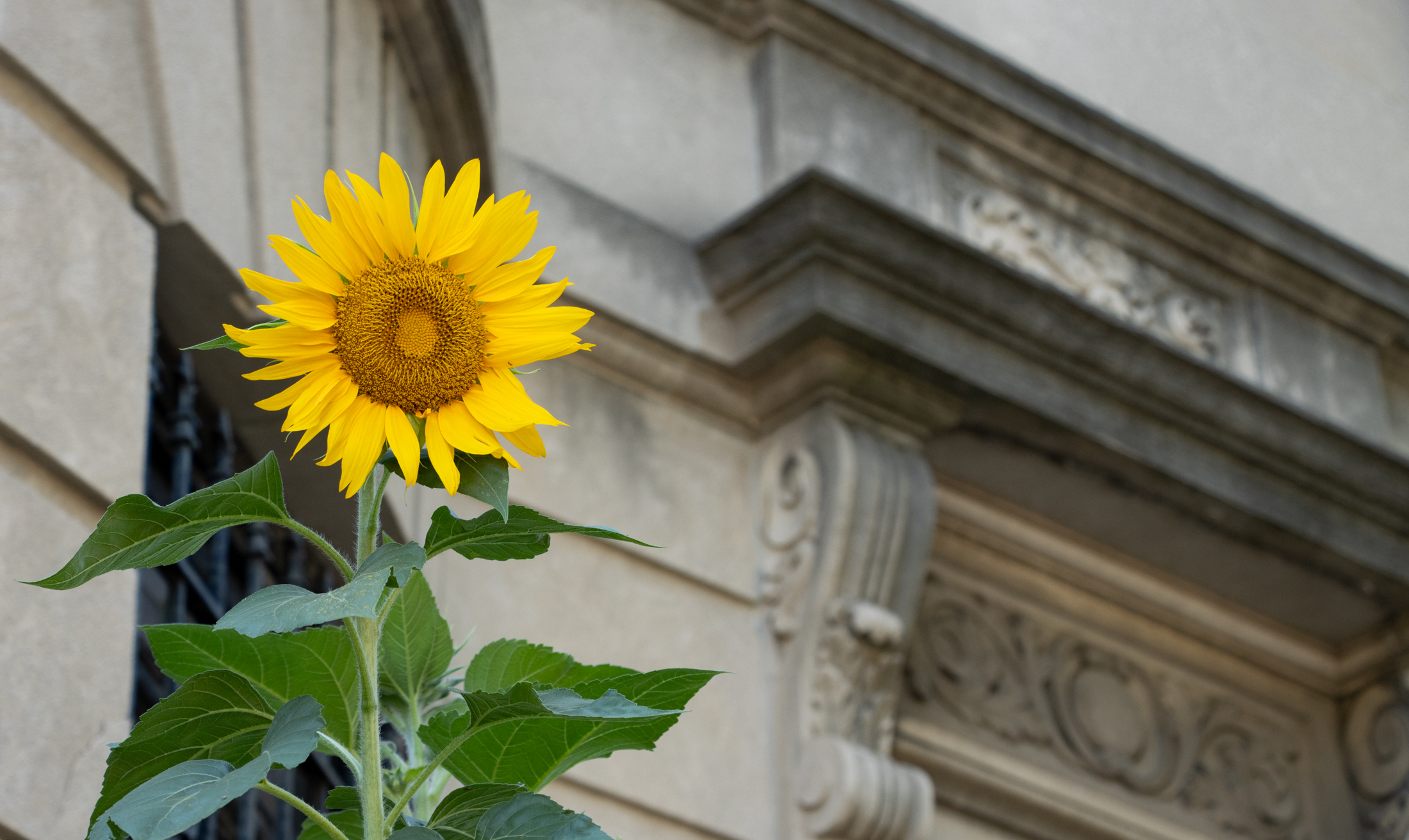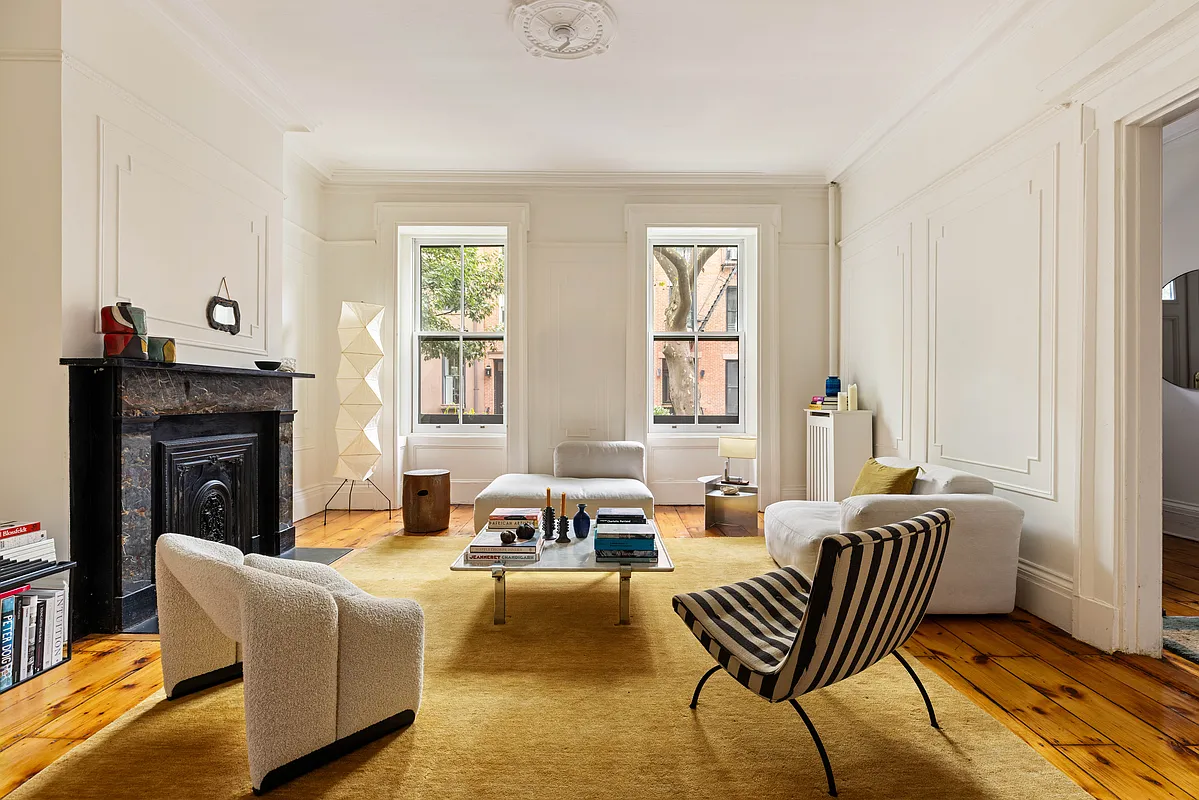Walkabout: Mr. Seney's Hospital, Part 1
(The Seney Hospital, Now NY Methodist Hospital. None of these buildings remain.) George Ingraham Seney was one of Brooklyn’s most generous philanthropists. He was born in Astoria, Queens, in 1826, the son of a prominent Methodist clergyman, the Reverend Robert Seney. His family was not wealthy, but he came from good Founding Fathers stock, he…


(The Seney Hospital, Now NY Methodist Hospital. None of these buildings remain.)
George Ingraham Seney was one of Brooklyn’s most generous philanthropists. He was born in Astoria, Queens, in 1826, the son of a prominent Methodist clergyman, the Reverend Robert Seney. His family was not wealthy, but he came from good Founding Fathers stock, he was a descendent on his father’s side, of James Nicholson, the first Commodore of the United States Navy. He was educated at Wesleyan University in Middletown, Ct. and went on to New York University, where he graduated in 1847. He began his career in New York as a bank teller in the Metropolitan National Bank of New York. In 1855, he was promoted to cashier, a position more akin to a department manager, and for the next twenty years, he and the bank president, a man named Williams, ran the bank. When Mr. Williams died, George Seney was the natural choice for the presidency of Metropolitan. By that time he had been quietly investing in the bank, and was among its largest shareholders. He took the office in 1877. Although being a bank president pays well indeed, Seney’s fortunes were not just from his job. He was an astute player of the stock market, and was a trustee in the Atlantic State Bank and the Phenix Insurance Company of Brooklyn. But his greatest deals were in railroads and transportation. He was an active financial partner in many different railroad lines, and made his biggest killing in the sale of the New York-Chicago-St. Louis railroad, called the Nickel Plate, to the Vanderbilt’s. Now the giving could begin in earnest.
As George Seney’s fortunes improved, he moved around Brooklyn Heights, going up the ladder of fine homes and big name streets. He and his family lived on Pierrepont Street in the 1870’s, and moved up to 123 Remsen Street, by 1881. He probably needed more room, anyway, as his family grew to nine children; six daughters and three sons. This very large house is now home to the Brooklyn Bar Association. By 1884, the family lived at 4 Montague Terrace, in a house that no longer exists, having been replaced by the co-op 2 Montague Terrace. A photograph from the NY Public Library’s collection shows the house in the foreground of a picture taken in 1922. The house looks closed up and ready to be demolished. The house is quite large, with a side enclosed porch/greenhouse, and fabulous river view, very similar to 2 Pierrepont Place, the home of Alfred Tredway White, another Brooklyn philanthropist.
By 1881, George Seney was a millionaire many times over, said to be worth anywhere from $12 million to $20 million. He began to give by making a huge gift to his Alma Mater, Wesleyan University, a gift of $550,000. He gave $100,000 to the Long Island Historical Society, just as they were moving into their new building on Pierrepont and Clinton. He funded literary institutions in Georgia to the tune of $225,000, and gave to the operations of several other Brooklyn charities: the Industrial Home for Homeless Children and the Brooklyn Eye and Ear Infirmary, both recipients of $25,000 gifts, and the Brooklyn Library, which received a gift of $62,000. To adjust for inflation, and measure the magnitude of this giving, George Seney would have been worth around $440 million, and his gift to the Long Island Historical Society would have been the equivalent of over $2.2 million. He gave Wesleyan the equivalent of over $12 million dollars, and his $25,000 gifts would be $550,000 now. But his pride and joy would be a hospital, named after his father.
In January of 1881, the Christian Advocate, a Methodist Episcopal magazine, printed an article by its influential editor, the Reverend James Monroe Buckley. He told a story about the organist at his former church, who had gone to New York City, and was run over by a team of panicked horses as he crossed a busy street. As the man lay there mortally injured, there were no hospitals nearby to take care of him, and by the time help came, it was too late, and the man was dead. The incident so incensed Rev. Buckley that he insisted that it was about time the Methodist Episcopal Church erected a hospital somewhere in this world. Many Methodists at the time believed that the church should be focusing on building churches and saving souls, but many more embraced the idea that an active Church should be in the society doing what it could to save lives, as well. This idea was wholly embraced by George Seney, and he announced in 1881 that he was going to buy property in Brooklyn, and build a hospital for the people of Brooklyn.
A large plot of land, encompassing sixteen lots on Seventh Avenue to Eighth Avenue, from 6th to 7th Streets in what was called at the time Prospect Heights, now Park Slope, was purchased by Seney. In August of 1881, he presented the city of Brooklyn the land and $100,000 to start building the hospital. It would be incorporated as the Methodist Episcopal Hospital of the City of Brooklyn, to be known as the Seney Hospital, in memory of George Seney’s Methodist minister father. The hospital would be run by the Methodist Episcopal Church, with a board of managers who represented the Church, influential and charitable men such as Mr. Seney and other philanthropists, and medical professionals. Mr. Seney announced that this new hospital would open to Jew and gentile, Protestant and Catholic, heathen and infidel. There would be no discrimination between races or ethnic groups, and anyone who needed care would be served.
Seney and his committee announced that a contest would be held to choose an architect. There were three finalists, and they chose the designs of J. Mumford, Jr. a local architect about whom very little information seems to exist. He would design nine separate buildings for the hospital complex, and construction was to begin on the first three immediately. On September 20, 1882, the cornerstone was laid with great pomp and ceremony, with Mayor Seth Low leading a group of church and civic dignitaries. Much was made of the munificence of George Seney, the generosity of his gift, and what a fine man he was, and what a fine hospital this would be, located on the edge of Prospect Park. Little did anyone know that in only two years, multimillionaire George I. Seney would be flat broke.
Next time: The fall and the rise of George Seney, and his family legacy.

(Photo: Property Shark. 123 Remsen St, the second Seney home in the Heights.)

(Photo: NY Public Library. 4 Montague Terrace, the third Seney home in the Heights.)





Brooklyn must have been really something to see in the 19th century…
The legacy survives although the original architecture does not. Methodist Hospital is a very important resource for the area.
Ah, minard- the “beloved” Robert Moses. The area must have been magnificent before the BQE decimated it.Just judging from the wonderful houses still left along the promenade.
That was some hospital, MM. What a shame they’re gone now.
actually I think there is currently a children’s playground on the site of 4 Montague Terrace. In the forefront of the old photo is the little curved bridge that spanned Montague Street, which at that point ran way below sidewalk level as it sloped down to the ferry landing. The little bridge and the sloped portion of Montague Street was removed when the BQE was built. This house lasted until well after WWII but that was a time of forgetting the past, blowing up old houses, and building split levels. Certain posters would have been much happier back then.
Again, you have left me holding my breath MM.